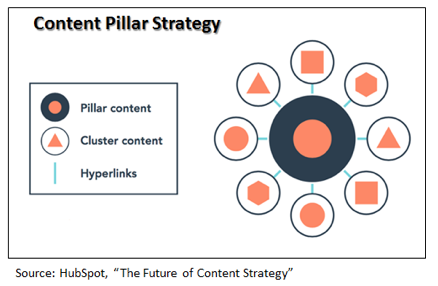8 Key Things You Need to Know about How Your Firm Stacks Up to the Competition’s Digital Marketing Program
There’s been a lot written and said about how CPA, consulting, law and other types of professional services firms are a few beats behind the measure when it comes to adapting new marketing approaches and technologies like those offered by inbound marketing.
Sad, but true.
Even though I got the chance to drop a music metaphor into a blog post (at long last!), I’m not going to discuss why it’s important for firm management teams to be literate with inbound marketing strategies and tactics. Instead, I’m going to give you some guidance on how to find out how your firm stacks up against your competition. Caution: this could get rough.
With the budgeting season fast approaching, if you’re not doing a competitive analysis and inventory of your competitors’ digital marketing program and resources, now is probably a good time to start. It’s important for your firm’s management team to see where and how your competition is spending resources on digital marketing, and how that expenditure is paying off in terms of more visibility, leads and ROI from their marketing budget.
Fortunately, there’s a lot of ways and a number of FREE resources to bring your firm up to tempo (wow, TWO music metaphors!)
8 Things you’re Going to Want to Know
While there are a lot of moving pieces to doing an analysis of your competition’s digital footprint, you might consider these 8 areas as a good starting point to see where you stand, and where you might want commit resources in your next budgeting cycle.
(1) Are They Getting More Eyeballs to Their Website then We Are?
More traffic to your firm’s website means more opportunities to showcase how and why your firm is different, as well as more opportunities to generate leads. There are a number of free tools that will let you compare your unique site visits to those of your competition, like Alexa.
If you’re behind your competition when it comes to site traffic, then it may be appropriate to devoting budget and other resources to “get found first” strategies and tactics, like website optimization.

(2) Are They Getting Love From Other Websites?
We know that showing up on the first page of search engine rankings is largely a function of how relevant and authoritative the search engines consider your site to be. One of the key ways that search engines measure this is by the number and quality of 3rdparty websites that link back to your website. This can be measured with a free tool from Open Site Explorer that among other criteria provides insights to your site’s “domain authority”:

If your domain authority is low, as shown in this example, you might consider putting budget and resources in a link building program. A word of caution here: be careful of “black hat” link building programs offering “thousands of links for only $$$$”. There are qualified consultants who provide white hat link building, but please do your homework and due diligence before engaging any of these resources because this is not the easiest of tactics to accomplish.
(3) What Are They Doing With Social Media and How Good Are They?
 We also want to know whether or not your competitors are making use and taking advantage of social media. The easiest way – check out their website to see if they have social media accounts, and then check out those accounts to see the number of people engaged, how frequently they post and the quality of those posts.
We also want to know whether or not your competitors are making use and taking advantage of social media. The easiest way – check out their website to see if they have social media accounts, and then check out those accounts to see the number of people engaged, how frequently they post and the quality of those posts.
It’s highly likely that social media will become one of key battlefields for any accounting, consulting law or AEC marketing program. If you are not on tempo, then this is the year to put money into the budget to start building a stronger social media presence.
(4) How Good Are They at Filling the Top of Their Sales Funnel?
One of our favorite free tools for competitive analysis is HubSpot’s Marketing Grader, which seeks to provide insights on the strength of activities across the entire online marketing funnel. Infotrust wrote a blog post last year called “6 Free Analytics Tools to Help You Understand Your Competitor's Web Traffic” that provides a great summary of this tool:
Market Grader allows you to not only “grade” your full online marketing funnel, but it also allows you to see competitor’s comparatively. Also, without signing up for an account, it measures:
- Traffic by asking the questions: “Are you doing enough to bring visitors to your website and fill the top of your sales and marketing funnel? How are your content creation, optimization and website promotion skills?”
- Leads by asking: “How do you do when it comes to converting traffic into leads and leads into customers? Do your landing pages, conversion forms, email marketing and social media efforts compare?”
- Analytics by asking “Do you know what marketing activities are working (or aren’t working)? Do you measure your successes and failures?”

Low scores on this tool (generally, anything under 75) are a good indication that your competitors (or you) are asleep at the wheel when it comes to inbound marketing. It’s time to devote budget to developing and installing an inbound marketing program!
(5) What Are They Doing on their Website to Generate Leads
You’re going to want to know if your competitors are using their website as an online brochure or as a lead generation tool. The easiest way to assess this is to see if they have call to action buttons on their website that lead to a dedicated landing page where prospect information can be collected.

If your competitors are not doing onsite lead generation, and you are, congratulations for you’ve just secured a huge competitive advantage. On the other hand, if they are, and you’re not, it’s time to speed up your tempo and devote budget to developing an onsite lead generation capability.
(6) Are They Doing Any Content Marketing?
As astute marketers, you know how important content marketing is becoming in professional services. Videos, podcasts, articles, checklists, etc. are just so important these days. Perhaps the most important item to assess if whether or not your competition is blogging and how frequently they blog.

Developing and executing a consistent, high quality blog is definitely going to hit your budget. But since blogging serves many purposes, from its role in search engine optimization to personal branding to lead generation, it may be one of the most important shifts in your budgeting that you’ll be making over the next few years.
(7) How good is their on page SEO?
You’ll be able to tell how astute your competitors are when it comes to best on page SEO practices just by looking at any page on their website. What we’re looking for is their keyword strategy, and to see if they are coordinating their page title, with their key headline with the URL. Then, we want to take a look at their page descriptions on the search engines to see how effective it is for motivating someone to visit the website.

If you see alignment of all of these on page structures, you’ll get a pretty good insight that your competitors are using best practices for on page SEO, and therefore have a better chance of getting found first ahead of those firms who are not integrating
(8) Is Their Website an Antique or an Effective, User Friendly Tool
There was a really interesting post on the HubSpot blog a few weeks ago called “A Look Back at 20+ Years of Website Design”, billed as “…stroll down memory lane to look at how web design has evolved (for better and for worse) over the past two decades.”
The blog’s author, Myia Kelly writes that, “over two decades after the publication of the first website, web design has firmly established itself as an irreplaceable component of every good marketing strategy. In terms of modern aesthetics, we have seen the proliferation of minimalism, flat graphics (so long, 3D buttons!), blended typography, and large background images. In addition, UX has taken center stage, giving way to such design features as infinite scrolling and single-page design.
Lay your website out side by side with your competition and ask this simple question – which is more appealing? If you find that your site is a dinosaur, then it may be time to re-design or re-engineer what you have.
Bringing Your Firm Up to Tempo
After you’ve done your analysis of your competition’s inbound marketing program, you’ll have a pretty good idea of whether you’re behind the market’s tempo when it comes to inbound marketing. If so, coming up to speed is a matter of education, planning, and redirecting your budget.
But as you may have surmised, being competitive in an inbound marketing environment just isn’t a matter of staying with the tempo, it’s also a matter of making sure your instruments are in tune,
Wow… 3 music references in one blog post. It may be that my subconscious is telling me to end today’s blog and get to practicing my guitar!
.png)







Leave a Comment